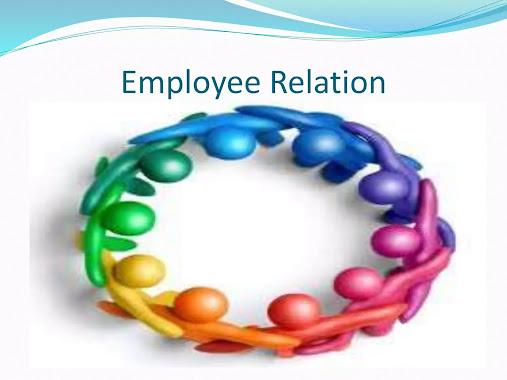Introduction:
In the current dynamic and competitive business landscape, personnel planning has emerged as a crucial strategic objective for enterprises hoping to thrive .Anticipating future talent requirements, coordinating human capital strategies with business goals, and making sure that organisations have the appropriate people in the right places at the right times are all essential components of effective workforce planning. We will examine the essential elements of workforce planning in this blog and offer helpful advice for creating an organisation that is prepared for the future.
Understanding Workforce Planning:
Workforce planning is a systematic process that involves analysing current workforce capabilities, identifying future talent needs, and developing strategies to address gaps and opportunities. It encompasses various aspects, including workforce demographics, skills assessments, succession planning, and talent acquisition strategies. By taking a strategic and data-driven approach to workforce planning, organisations can proactively address emerging challenges and capitalise on new opportunities for growth and innovation.Aubrey Nekvinda(2024).
Aligning with Business Objectives:
Central to effective workforce planning is the alignment of human capital strategies with overarching business objectives. Organisations must clearly define their strategic goals and identify the workforce capabilities required to achieve them. By aligning workforce planning efforts with business priorities, organisations can ensure that they have the right talent in place to drive performance, innovation, and long-term success.
Anticipating Future Talent Needs:
Successful workforce planning involves anticipating future talent needs based on evolving business requirements, industry trends, and market dynamics. This requires organisations to conduct thorough analyses of internal and external factors that may impact their talent supply and demand. By leveraging workforce analytics, predictive modelling, and scenario planning, organisations can identify potential talent gaps and develop proactive strategies to address them. credly (2024).
Developing Talent Pipelines:
Building a strong talent pipeline is essential for ensuring a steady supply of skilled workers to meet current and future business needs. Organisations can develop talent pipelines through various initiatives, including recruitment, training and development programs, succession planning, and internal mobility opportunities. By investing in the development of internal talent and fostering a culture of continuous learning and development, organisations can reduce reliance on external hires and build a more resilient and agile workforce.ANNA VERASAI(2023)
Embracing Flexibility and Adaptability:
In today's rapidly evolving business environment, organisations must embrace flexibility and adaptability in their workforce planning efforts. This may involve adopting agile workforce models, implementing remote work policies, and leveraging contingent talent to supplement core workforce capabilities. By embracing flexibility and adaptability, organisations can respond quickly to changing market conditions, mitigate risks, and capitalise on emerging opportunities.
Measuring and Monitoring Progress:
Effective workforce planning requires ongoing measurement and monitoring of key performance indicators to track progress and evaluate the effectiveness of strategies. Organisations should establish clear metrics and benchmarks to assess workforce capabilities, talent acquisition efforts, employee engagement, and other relevant factors. By regularly reviewing and analysing workforce data, organisation can identify areas for improvement and make informed decisions to optimise their human capital strategies.
Conclusion:
In conclusion, workforce planning is a critical process for building a future-ready organisation that can adapt to changing business environments and achieve long-term success. By understanding workforce needs, aligning with business objectives, anticipating future talent requirements, developing talent pipelines, embracing flexibility, and measuring progress, organisations can effectively plan for the future and ensure that they have the right talent in place to drive performance and innovation. Through strategic workforce planning, organisations can position themselves for growth, resilience, and competitive advantage in an increasingly dynamic and uncertain world.
Refferance
- Aubrey Nekvinda(2024),The Ultimate Guide to Crafting a Comprehensive Workforce Plan,hubstaff ,https://hubstaff.com/blog/workforce-plan/
- Credly(2024),Workforce Forecasting: Plan for Future Talent Needs with a Skills-Based Strategy,https://learn.credly.com/blog/workforce-forecasting-plan-for-future-talent-needs-with- a-skills-based-strategy
- ANNA VERASAI(2023),WORKFORCE PLANNING: ANTICIPATING FUTURE SKILL NEEDS AND BUILDING A TALENT PIPELINE,the hr digist,https://www.thehrdigest.com/workforce-planning-anticipating-future-skill-needs-and-building-a-talent-pipeline/


.webp)

Well organized article. Workforce planning is very important in an organization to aligning the employees for their future.
ReplyDeleteThis blog discusses the value of workforce planning in building a company that is prepared for the future. It places a strong emphasis on establishing talent needs, embracing flexibility, anticipating future talent needs, monitoring progress, and coordinating human capital strategies with business objectives.It provides insightful information about strategic workforce planning for sustained performance.
ReplyDeleteWhen we planning workforce in organisations that what we identify all things are shared with blog that is great article good job
ReplyDelete